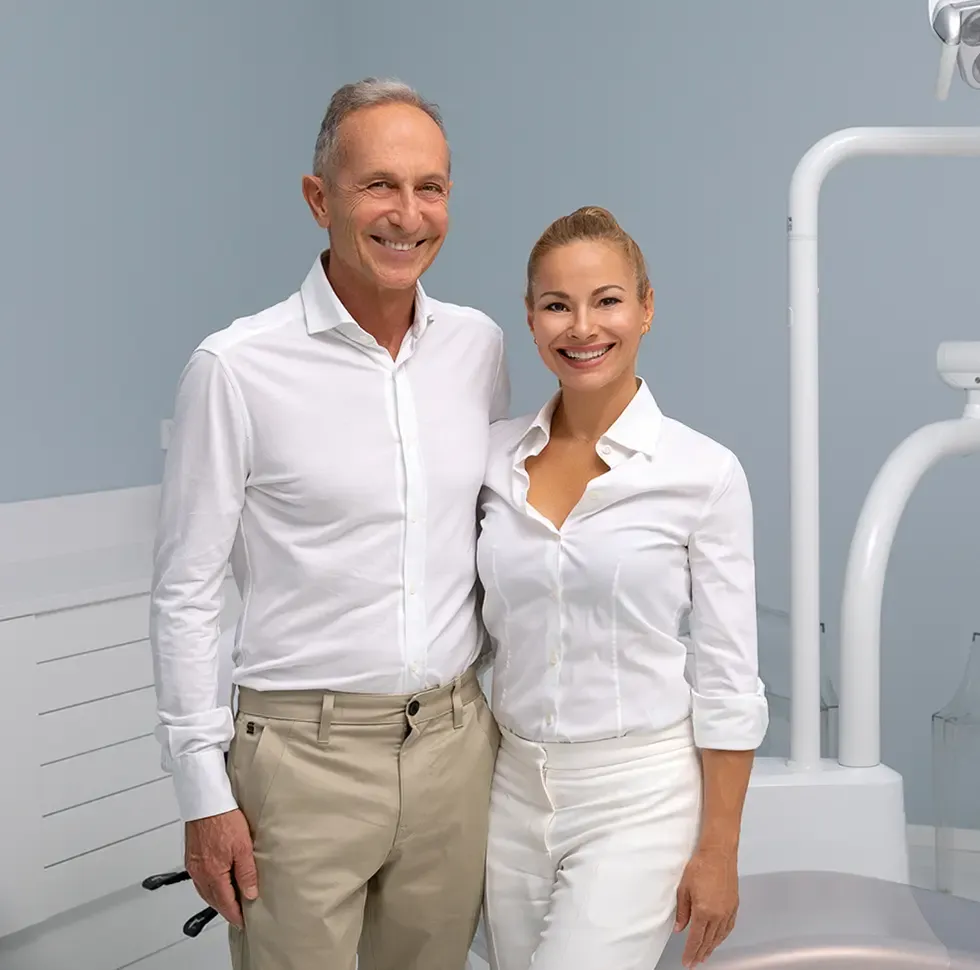Other Treatment Methods
- Dental anxiety / pain-free dental treatment
- Dental prosthesis
- Digital dentistry
- Gum treatment
- Orthodontics
- Pediatric dentist
- Prophylaxis / Professional Teeth Cleaning (PZR)
- Root canal treatment / Endodontics
- Sports dentistry
- Teeth grinding and CMD (Craniomandibular Dysfunction)
- Teeth whitening / Bleaching
- Veneers (dental shells)

Dental anxiety / pain-free dental treatment
Although the days when the dentist's drill painfully tortured the sensitive nerve are long gone, many patients still fear – openly or subconsciously – Pain during treatment. Modern dentistry has an enormous repertoire of effective and individually applicable anesthetic and sedation options.
Local anesthesia for anxious patients
Local anesthesia deactivates the pain receptors in a limited area without burdening the organism. For this reason, local anesthesia is the most commonly used anesthesia method in dental treatment. Nowadays, the doctor can even prevent the unpleasant prick of the needle if he treats the area beforehand with a special anesthetic spray or ointment. Local anesthesia is standard for minor procedures (fillings, Inlays or CrownsBut even when removing a hopeless tooth or placing implants, painlessness can be effectively brought about.
Twilight sleep/analgosedation at the dentist
Some patients do not feel comfortable despite local anesthesia during the treatment of their teeth or even experience great Fears. Here, the so-called analgosedation, also known as twilight sleep, can offer a good solution: The patient remains conscious and responsive, but can relax internally through the simultaneous administration of pain- and sedatives. In analgosedation, the patient's circulatory system is constantly monitored to ensure maximum safety. The intravenous access also allows the anesthesia to be deepened or the administration of painkillers to be increased at any time, if necessary. This form of anesthesia has proven to be particularly useful for anxious patients: it works reliably, is gentle on the body, and at the same time gives the patient the opportunity to experience what is happening with full consciousness.
Other Treatment Methods in this Department
Experts for this Treatment Method

- Aesthetics & Function in Dentistry
Dr. Dr. Ákos Fehér
Fehér Dental Team, Smile Lounge
- Aesthetics & Function in Dentistry
Jan Kurtz-Hoffmann
Zahnärzte im Roßbachpalais
- Aesthetics & Function in Dentistry
Zahnarzt Robert Svoboda M.Sc.
ZahnGesundheit Oberkassel
- Aesthetics & Function in Dentistry
Dr. med. dent. Nico Lindemann
Zahnärzte im Roßbachpalais
- Aesthetics & Function in Dentistry
Dr. med. Tímea Wicker
Fehér Dental Team, Smile Lounge
- Aesthetics & Function in Dentistry
Dr. med. dent. Thomas Marc Schulte
Praxis Dr. med. dent. Thomas Marc SchulteAll Experts in this Department
Show All
- Aesthetics & Function in Dentistry
Dr. Dr. Ákos Fehér
Fehér Dental Team, Smile Lounge
- Aesthetics & Function in Dentistry
Dr. med. dent. Malte Schönrock M.Sc., M.Sc.
Dent Aesthetic
- Aesthetics & Function in Dentistry
Jan Kurtz-Hoffmann
Zahnärzte im Roßbachpalais
- Aesthetics & Function in Dentistry
Dr. med. dent. Tore Thomsen
Zahnarztpraxis Dres. Thomsen & Kollegen
- Aesthetics & Function in Dentistry
Dr. med. dent. Oliver Brendel
Dinkelacker & Brendel
- Aesthetics & Function in Dentistry







